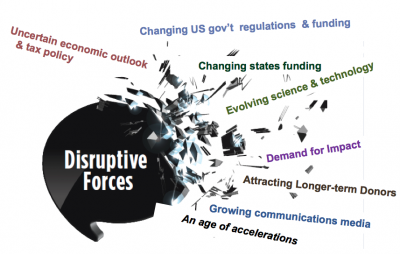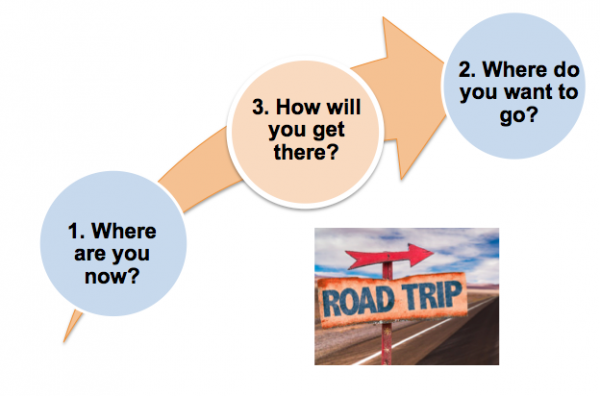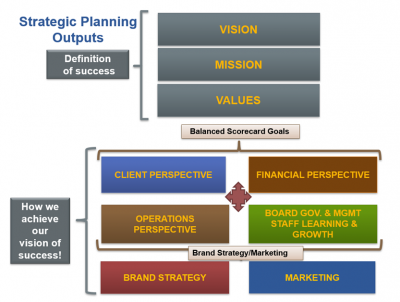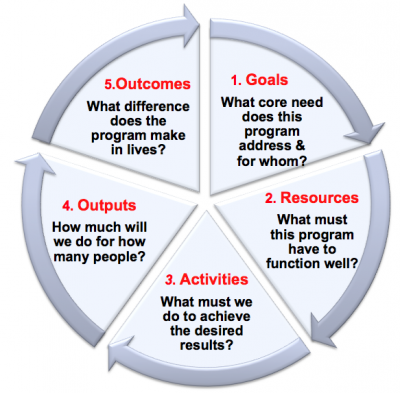Build your best future by seizing opportunities and addressing your organization’s key challenges
What is your strategic direction for the next 3 – 5 years and are you achieving your potential?
What makes your nonprofit a great investment?
Typical annual planning only focuses on plus or minus 2 to 10 percent of your current programs. Unfortunately, that’s like planning from the rear view mirror. It won’t likely address your future big opportunities and aspirations. And it can miss uncertainties and big threats like those in this graphic.
What is Strategic Foresight?
A fresh approach to strategic planning. Here are the steps:
Analyze the current environment for trends, issues, and insights.
- Gather input from internal stakeholders— board and staff
- Gain insights from external stakeholders and community leaders
- Benchmark programs and differentiate by analyzing allies and competitors– key local organizations with which you may be confused, plus best practice organizations around the country
- Draft a SWOT analysis of strengths, weaknesses, opportunities and threats
- Evaluate a financial analysis from a donor perspective as a charity evaluator would to help your fundraising
- Map alternative future scenarios, considering threats, innovative solutions, opportunities and aspirations
Set direction, vision, mission, goals, objectives and measures
Implement the plan to transform your future
Strategic Planning Results
- Develop vision, mission, values
- Create measurable goals and objectives in each balanced scorecard perspective: client, financial, operations and people (board, staff, volunteers)
- Facilitate development of Key Performance Indicators (KPIs) to measure future progress; develop a Performance Dashboard
- Support board approval of Strategic Plan and performance measures
Facilitate Drafting of 1st Year Implementation Plans
- Assist senior staff in identifying key initial focus areas and creating on a 1st year business plan
- Draft logic models for key programs to support fundraising (see below)
- Design a communication launch to introduce the strategic plan to staff, donors and key partners
- Recognize stakeholders for their participation
- Identify quarterly milestones and develop quarterly dashboard scorecards
Strategic Doing
- Your organization engages board and staff in their roles to implement your new Strategic Plan
- Stay the course, measure results, develop annual plans as the next leg in implementing the strategic plan and make necessary course corrections along the way
- The bottom line: Now you can “lead from the future” — making decisions with an understanding of your strategic direction in detail to help better achieve your vision and mission.
Road Trip Key Principles – Best Path to Strategically Design Your Future
- Trip need: Recognize the need to address future uncertainties, threats, big opportunities, and aspirations for the next 3 to 5 years
- Thoughtfully plan the trip: critical to success is putting Strategic Thinking ahead of Strategic Planning
- Consider alternative routes: Develop multiple scenarios for future direction
- Decide who to include: Be inclusive of board and senior staff
- Enjoy the ride: Externally assisted research and a facilitated process can improve the trip – Strategic4sight can help!
- Measure and monitor progress: Develop measurable, balanced scorecard goals and objectives. Create and regularly review the dashboard
- Communicate your trip: Share your new strategic plan with staff, donors, volunteers and other stakeholders
- Take the trip! Implementation is critical to achieve goals and impact, starting with your 1st year business plan
An effective complement to a Strategic Plan and 1st year Business Plan is a strategic Marketing Plan to be successful in fundraising, volunteer recruitment, client outreach, new service development and achieve other business plan objectives.




